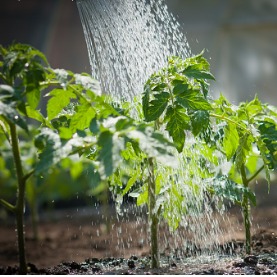
7 Common Planting Mistakes That Affect Landscapes
May 24th 2019
The early winter months are a great time to start planning for new plants in the spring. But no matter how green their thumbs are, many people still commit common planting mistakes, intentional or not. Here, Evergreen Lawn Care provides guidance on seven common planting mistakes and how to avoid them for a lush landscape Gainesville residents can enjoy year-round!
1. Not Following Plant-Specific Guidelines
Every plant has specific guidelines to ensure that it thrives and provides years of enjoyment. Pay attention to a plant’s needs for space, sunlight, and water. Planting in an area that receives full sun when a specific plant needs partial shade can be extremely hard on the plant. Plants spaced too closely together will fight for nutrients and resources, ultimately resulting in smaller and weaker rather than lush and thriving plants.
2. Forgetting What Was Planted
Most Gainesville landscaping has more than one type of plant. As a result, the more plants that are added, the harder it is to remember what has been planted and where. Even if the landscape is well-established, take some time to draw a map or place plant tags in the different areas. This will help you keep track of what is planted and whether new plants would fit.
3. Mowing The Lawn Too Short
Mowing the lawn can seem like a never-ending task, but cutting the grass shorter than usual won’t save time, at least in the long run. When a yard is cut shorter than what is suggested for that type of grass, it becomes vulnerable to diseases and insect infestations. Our landscapers recommend cutting only the top third of the grass.
4. Leaving Out Necessary Soil Preparation
Before you can sit back and enjoy beautiful landscaping, everything should begin with proper soil preparation. For plants to thrive, the soil needs to be adequately loosened — usually done by tilling — and have an appropriate amount of nutrients. Many local county extension offices provide soil testing services, which will tell you the soil’s pH and nutrient levels. With that information, you then can determine whether any other preparation needs to be done before planting.
5. Overwatering & Using Too Much Fertilizer
A little extra fertilizer or water might seem like a boost to plants, especially when they’re being established, but always follow the plant-specific guidelines. Too much fertilizer, which is usually nitrogen-based, can cause plants to grow too quickly. For vegetables, this can divert nutrients and result in smaller vegetables that take longer to be ready for harvesting. Overwatering, meanwhile, rots the root systems and makes the plants more susceptible to potentially deadly diseases or pests infestations.
6. Ignoring Weeds & Pests
Often when one pest or weed appears, others quickly follow. That’s why ignoring the issue is never a plausible solution, especially since the health of your landscaping is at stake. Instead, make time to pull weeds as they appear, and never procrastinate on pest removal. If you’re too busy to do the job personally, contact Evergreen Lawn Care for lawn maintenance that includes weeding and pest control.
7. Planting Non-Native Landscaping
Even though some non-native plants look attractive in your lawn, they also can attract pests and weeds. Florida-friendly plants are more sustainable. They adapt to the subtropical climate and are generally disease and pest resistant. To schedule planting and lawn services in Gainesville, FL, contact us today!
